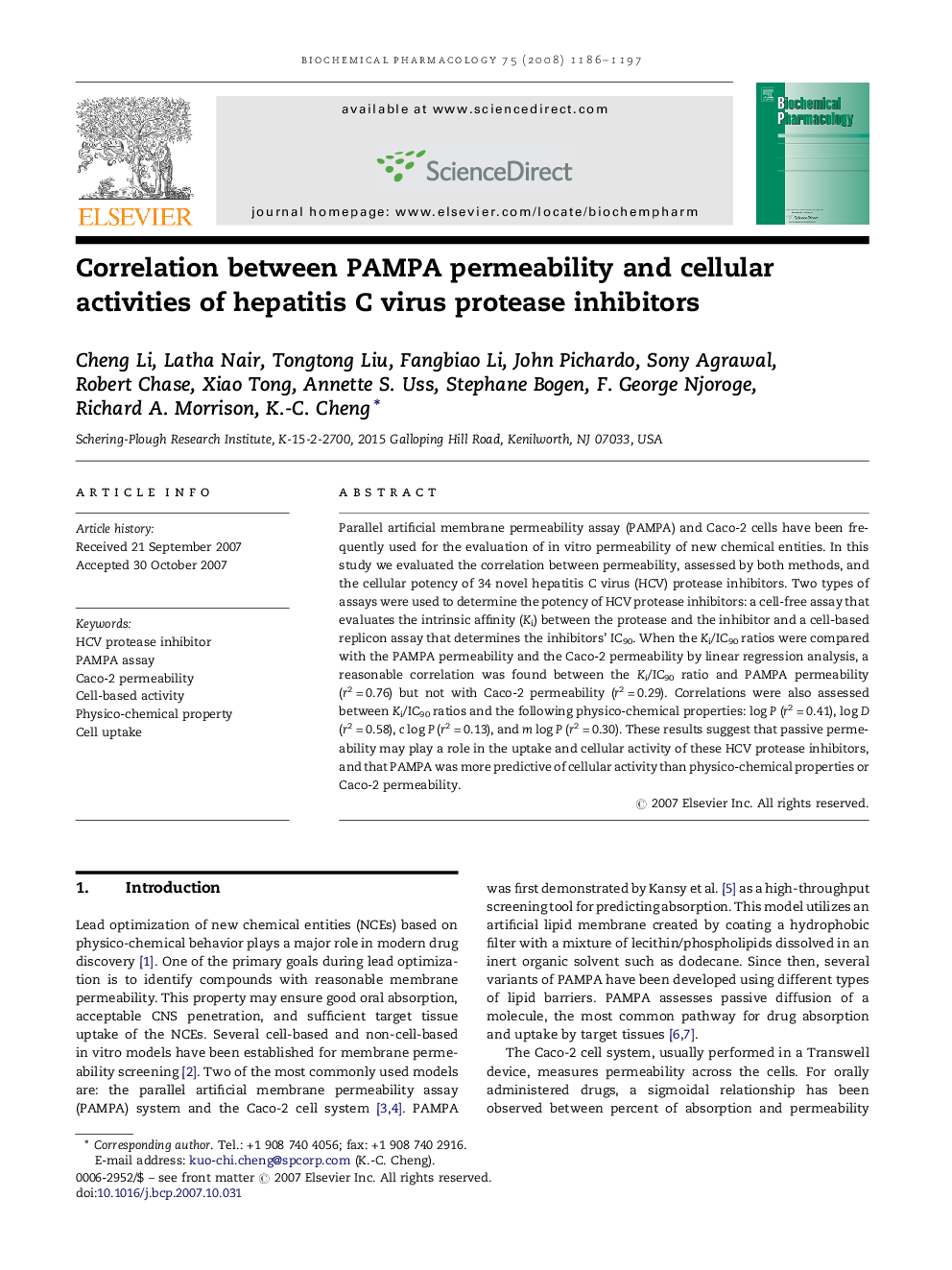| Article ID | Journal | Published Year | Pages | File Type |
|---|---|---|---|---|
| 2514622 | Biochemical Pharmacology | 2008 | 12 Pages |
Parallel artificial membrane permeability assay (PAMPA) and Caco-2 cells have been frequently used for the evaluation of in vitro permeability of new chemical entities. In this study we evaluated the correlation between permeability, assessed by both methods, and the cellular potency of 34 novel hepatitis C virus (HCV) protease inhibitors. Two types of assays were used to determine the potency of HCV protease inhibitors: a cell-free assay that evaluates the intrinsic affinity (Ki) between the protease and the inhibitor and a cell-based replicon assay that determines the inhibitors’ IC90. When the Ki/IC90 ratios were compared with the PAMPA permeability and the Caco-2 permeability by linear regression analysis, a reasonable correlation was found between the Ki/IC90 ratio and PAMPA permeability (r2 = 0.76) but not with Caco-2 permeability (r2 = 0.29). Correlations were also assessed between Ki/IC90 ratios and the following physico-chemical properties: log P (r2 = 0.41), log D (r2 = 0.58), c log P (r2 = 0.13), and m log P (r2 = 0.30). These results suggest that passive permeability may play a role in the uptake and cellular activity of these HCV protease inhibitors, and that PAMPA was more predictive of cellular activity than physico-chemical properties or Caco-2 permeability.
